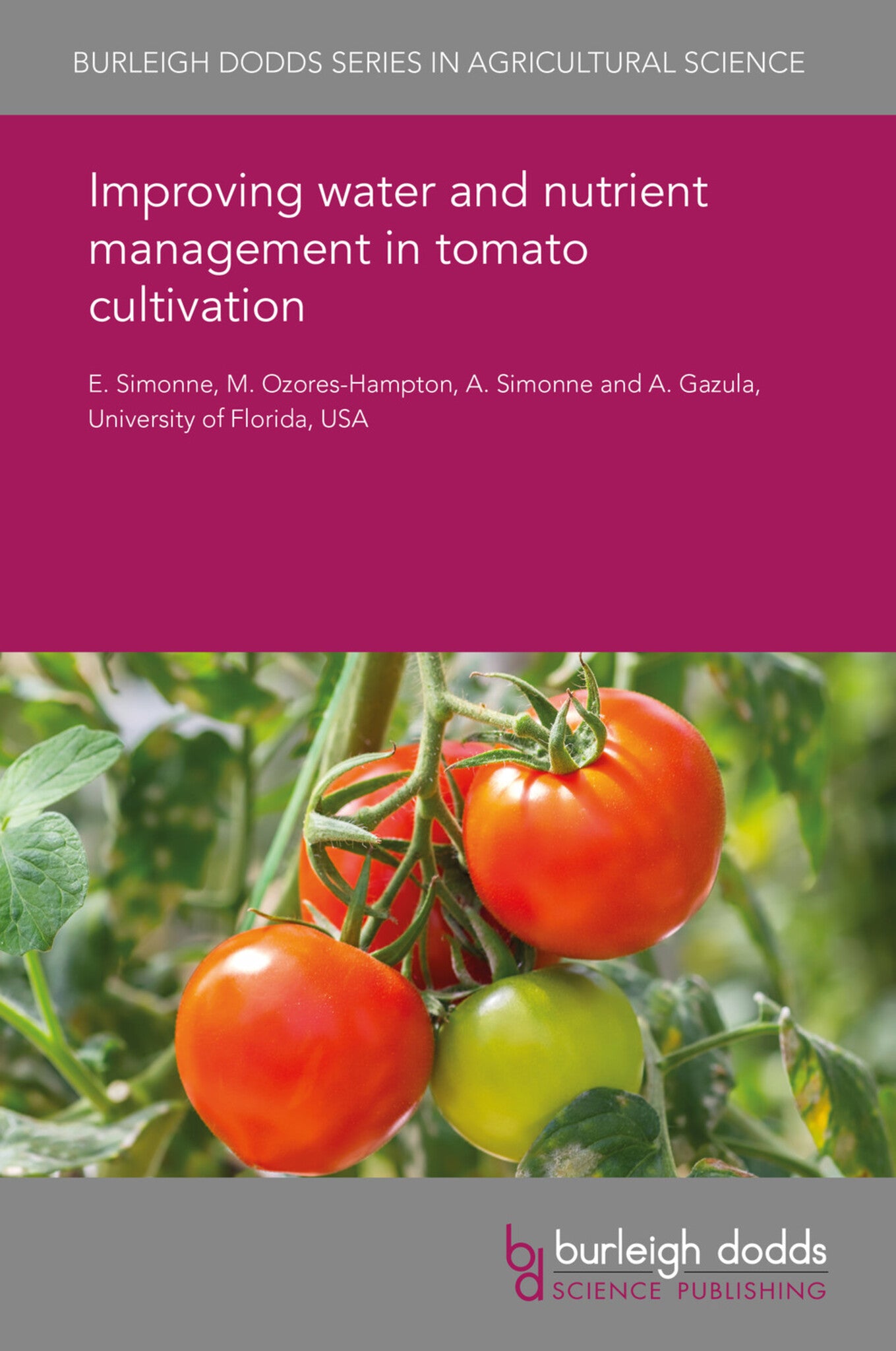We're sorry. An error has occurred
Please cancel or retry.
Improving water and nutrient management in tomato cultivation

Some error occured while loading the Quick View. Please close the Quick View and try reloading the page.
Couldn't load pickup availability
- Format:
-
31 March 2017


TECHNOLOGY & ENGINEERING / Agriculture / Sustainable Agriculture, Commercial horticulture, SCIENCE / Life Sciences / Horticulture, TECHNOLOGY & ENGINEERING / Agriculture / Agronomy / Crop Science, Agricultural engineering and machinery, Sustainable agriculture, Agronomy and crop production

1 Introduction 2 Overview of tomato production systems 3 Environmental regulations affecting tomato production in the United States 4 Changing approaches to water and nutrient management: from optimizing production to optimizing input effi ciency 5 Irrigation management systems for tomato production 6 Optimizing irrigation volumes and scheduling 7 Fertilization in tomato production: introduction and soil sampling 8 Nutrient sources for tomato production 9 Optimizing nitrogen (N) rates 10 Fertilizer recommendations, nutrient uptake and leaching 11 Implications of water and fertilizer use for food safety 12 Teaching water and nutrient management to tomato producers 13 Future trends and conclusion 14 Where to look for further information 15 References



